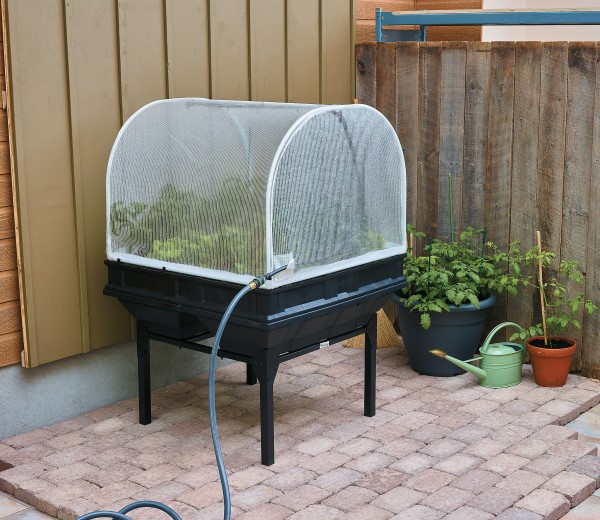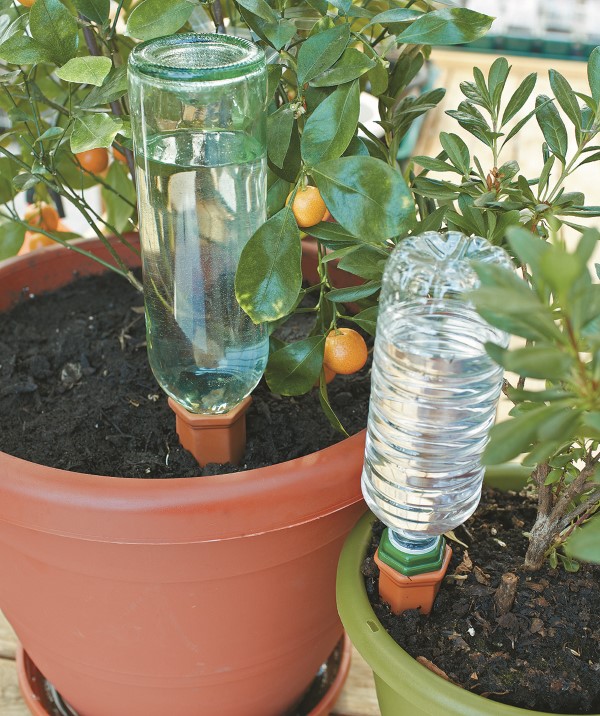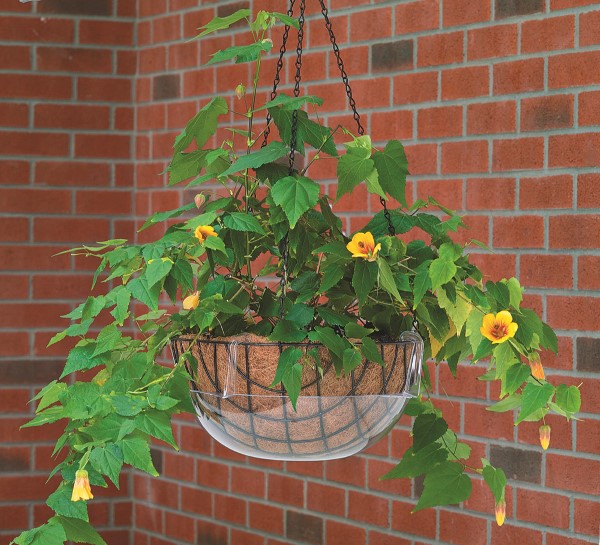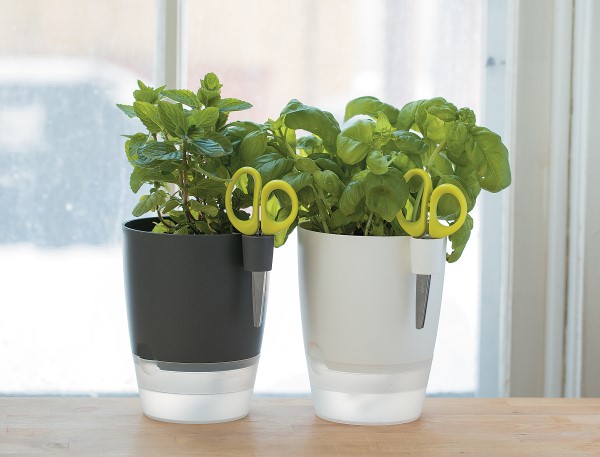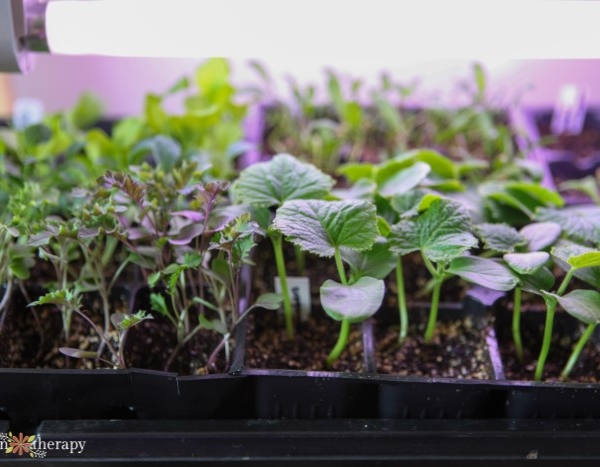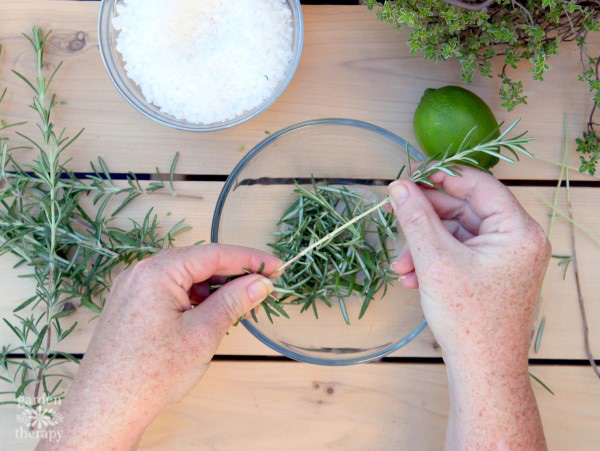Have you ever come home from a holiday to find that your plants are suffering from extreme thirst? Or even worse, have you come home to find the plants dead? Here’s how to water plants while away using some pretty cool plant sitters and DIY options.

Summer is the perfect time for weekend getaways like camping, cottaging, and boating. It’s also the time that the garden works the hardest. Summer heat and sun can be brutal on plants, with new plants, containers, annuals, and vegetables needing daily watering. Just one three-day long weekend can mean the end of these plants as they dry up and scorch in the hot sun.
After all of that hard work spring planting, you definitely don’t want that to happen!
It’s not always easy to get a plant sitter and it’s also not reasonable to stay home all the time. Heck, we all need to get away for the weekend and enjoy a little downtime. However, your plants keep growing tirelessly even when you want to take a break.
If you can, work out a buddy system with some neighbours and water each other’s plants. But, with so many people planning to skip town in the summer, you may not be able to find a garden helper when you need it most.
I’ve had this happen to me often enough that I have put in some research and tried out some cool high-tech and low-tech products that can help to save the day (and your plants!).
Here’s how to water plants when on vacation.

How to Water Your Plants While Away From Home
Whether you want to keep your hanging basket, raised bed, tree, potted plants, or houseplants happy, there are many nifty smart watering plant sitters you can utilize in your garden.
Solar Drip Watering Kit
When it’s sunny out, you’ll need water the most. That’s why a solar-powered automatic watering system is so brilliant! Solar drip watering kits are powered by the sun to water more often when it’s sunny out and less often when it’s not.
They include a solar battery that regulates the water flow and frequency. Hook this baby up to a rain barrel and your garden watering is completely hands-free.
I use this system for my vegetable plants in my raised garden bed, and it works great. I never have to worry about them, even when I am home.
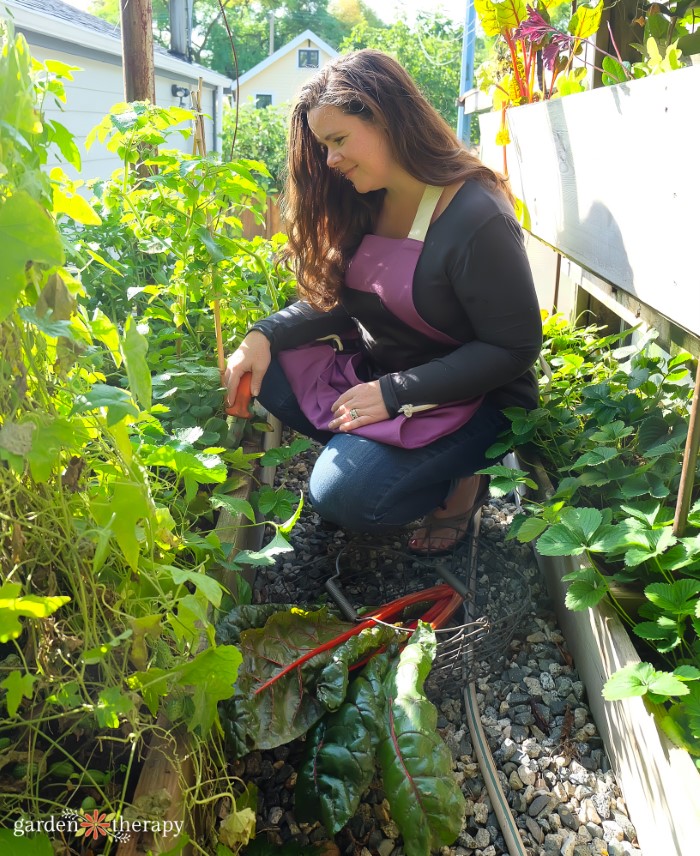
Wi-Fi Water Timer
This Wi-Fi water timer allows you to attach up to two hoses, each with a different schedule. You can set up the timer on the app, then access it from anywhere that has the internet (which is everywhere).
You can change the settings manually based on the weather forecast. Set this timer up with a bunch of sprinklers, soaker hoses, or spot soakers, depending on what sort of watering program your garden needs.
This handy system is something you will use for the whole season, not just vacationing. It’s also ideal for watering at non-peak times and when watering restrictions are in place.
Vegepod® Container Garden
If you want a whole vegetable garden that self-waters, you will love the Vegepod® Container Garden. This 10-square-foot garden has a self-watering reservoir that holds 32L (8.5 gallons) of water. It also comes with a mesh tent that keeps flying insects off your veggies (see ya, carrot rust fly!) as well as a cool misting system.
Just add your hose to an opening in the mesh, and it lets off a fine mist to keep seedlings damp. Set up the hose with the Wi-Fi timer, and you are sipping cocktails on the patio while your veggie garden takes care of itself.
Soda Bottle Self Watering Planter
This is one of my favourite budget-friendly self watering pots. I like to use this method for starting new cuttings, but you can also use it for other small plants.
To make it, you’ll want to cut a plastic soda bottle in half. You’ll leave the cap on and poke a hole in the cap using a nail and a hammer.
Cut a piece of thick cotton string and thread it through the hole. Make a knot on the inside of the cap to hold it in place.
Fill the bottom half of the container with water and the top half with the potting soil and the plant. Place the top half in the bottom one, letting the string sit in the water.
The water will soak up through the string, keeping the soil consistently moist.
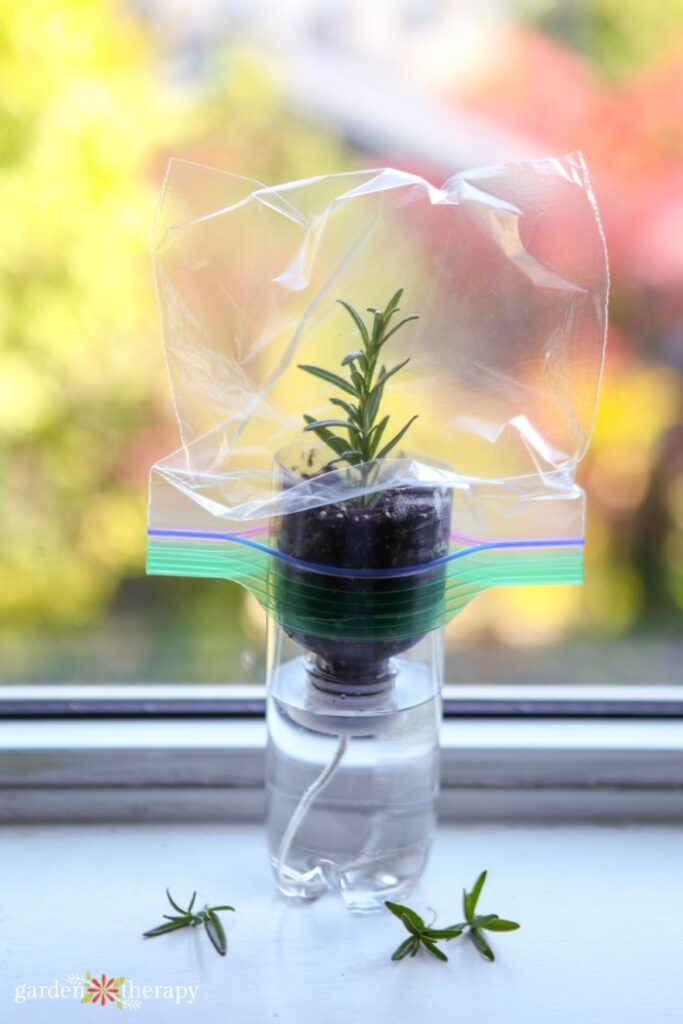
Lawn Sprinkler
To cover a large space, you can set up a sprinkler alongside the water timer to deliver a number of different watering options. You can control the water flow for this sprinkler, allowing you to adjust just how much water you want to go out while you’re away.
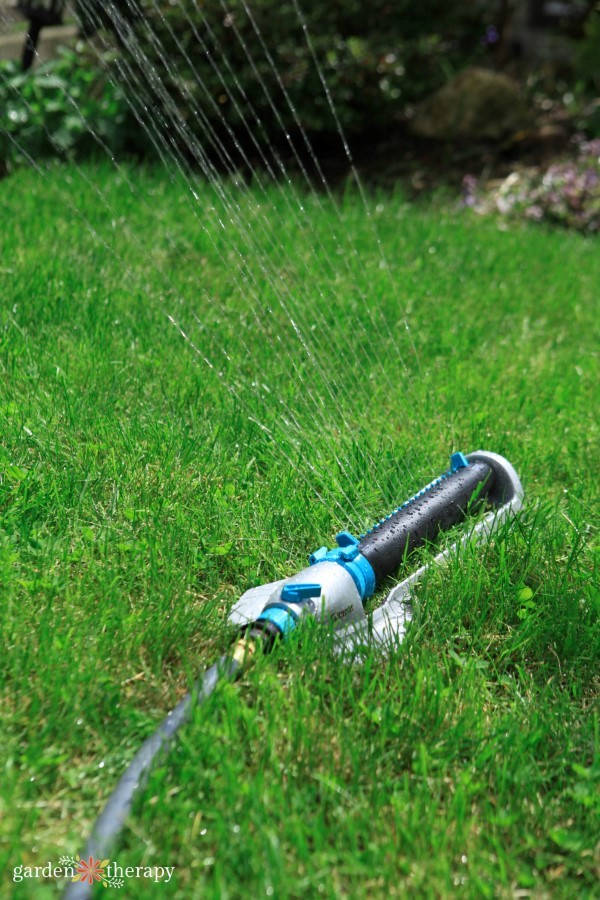
Bubble Spot Soaker
Add this Bubble Spot Soaker to the soil around tender plants or transplants to get them a gentle flow of water in spots where you may need a little extra to get the plants through the weekend. And you guessed it…pair it with a water timer!
Tree Watering Bags
If you have a new tree, particularly a street tree, it can have a very rough start if watering is restricted. Young trees need lots of water to stay healthy and grow strong roots. A tree watering bag is low-tech, but it works so well.
You fill the bag with water, and it drips into the soil around the tree. The 20-gallon tube will sufficiently water a young tree, slowly releasing water into the soil.
Plant Nanny Watering Spikes
Many years ago I bought a set of plastic watering spikes. I used them every year—attached to empty soda bottles—to babysit my hanging baskets and planters while on vacation. This version is quite the upgrade!
The terracotta Plant Nanny spikes eliminate the need to fill the plastic spikes with sand to slow down the water release. Plus, you attach them to a wine bottle, which I am more than happy to empty for the sake of the plants.
Plant Watering Globes
A plant watering globe is an essential product for all hanging baskets, in my opinion. If you grow hanging basket arrangements, you know how quickly they dry out—going away for the weekend will surely cause their demise.
Plant watering globes also work well for houseplants and other smaller containers you may have outside.
This flower well allows you to create a water reservoir in the basket or pot to extend the time between watering. I think it’s handy even if you’re not going away on vacation!
Olla Water Catchment System
An olla is a water catchment system made from unglazed terracotta pots that are buried in the ground and then filled with water. Since terracotta is porous, they slowly release water into the soil as a slow irrigation system.
In its simplest form, a terracotta pot with no drainage hole is buried in the ground and covered by a glazed plant saucer. A more advanced version is to create a “flute that has a smaller surface area above the soil line.
For a full tutorial on how to implement Olla’s into your garden, check out my book The Regenerative Garden.
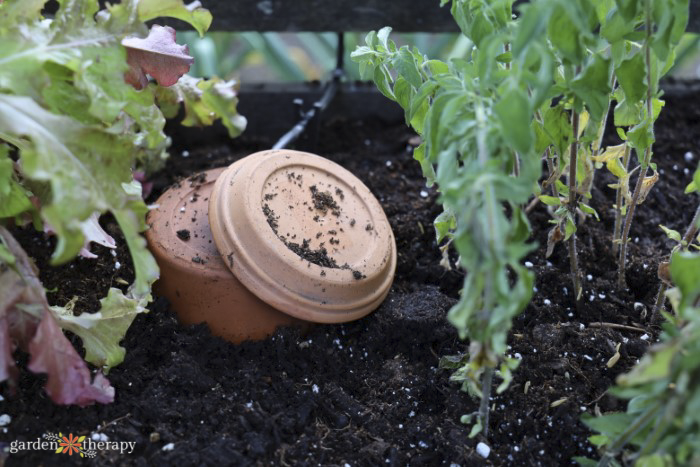
Saucer for Wire Hanging Baskets
This saucer for wire hanging baskets is another way to save your hanging baskets. I generally take my baskets down and put them into a kiddie pool of water to give them a good soak, and this eliminates that altogether.
You can water the flowers, catch the runoff, and allow them to soak for a bit longer. The saucer is a perfect hanging-basket babysitter for a holiday away.
Elho® Windowsill Herb Pot
This little indoor windowsill herb pot is a miniature version of a self-watering planter. A self-watering planter has a reservoir to hold an extra supply of water that can easily be wicked into the soil or roots when they dry out.
Self-watering pots come in all shapes and sizes, like the Self-Watering Upside-Down Planter that I use for my upside-down tomatoes. This fun windowsill version comes complete with herb scissors!
DIY Self Watering Pot
Speaking of self watering pots! This is one that I made for myself, and it’s essentially a larger more permanent version of my soda bottle self watering pot.
A cotton string wicks water up to the plant to keep it consistently moist. This pot works great for ornamental annual flowers or container herbs on your patio.
Smaller containers dry up quickly in the summer heat, so even if you’re not away, it will keep your plant’s happy when you’re busy and can’t constantly water.
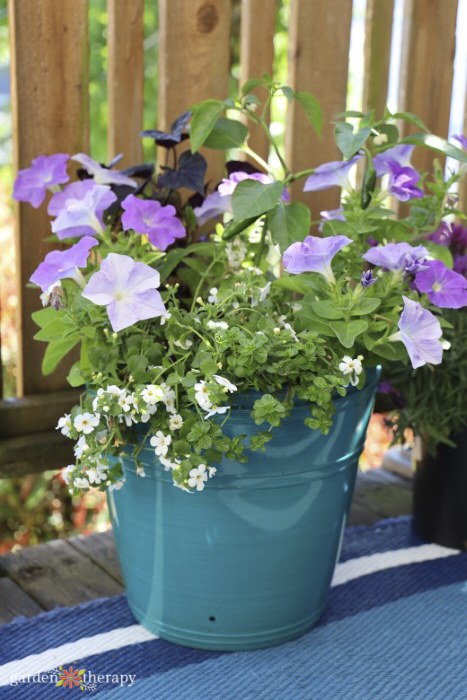
DIY Rain Gauge
This one isn’t a way to water plants while away, but more so determine if you actually need to worry about watering. Perhaps there has already been enough rainfall and plenty of water to last the weekend you’re away.
Making a rain gauge is as simple as putting an opened glass jar or plastic container outside in your garden and collecting rain. It can also be used to measure sprinkler water. Draw measurements on a Mason jar or clear plastic container with a permanent marker or by marking clear tape with the measurements and attaching it to the jar.
Determine how much rainfall your garden needs by sticking your finger into the soil up to your first knuckle after a rain. If the soil at the tip of your finger feels cool and sticks to your skin when you remove it, the soil is wet. If your finger comes out dry and the soil feels warm, the garden will need supplemental water.
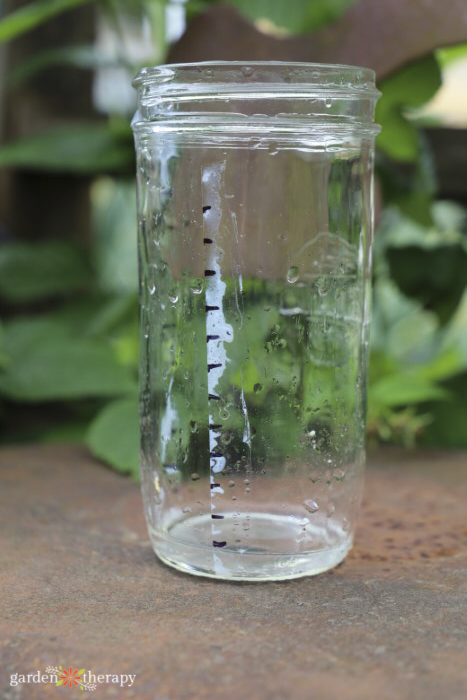
And that’s how you water your plants while away on vacation! So next time you can’t find a plant sitter or you’re just gone for the weekend, try one of these nifty smart plant sitters.

